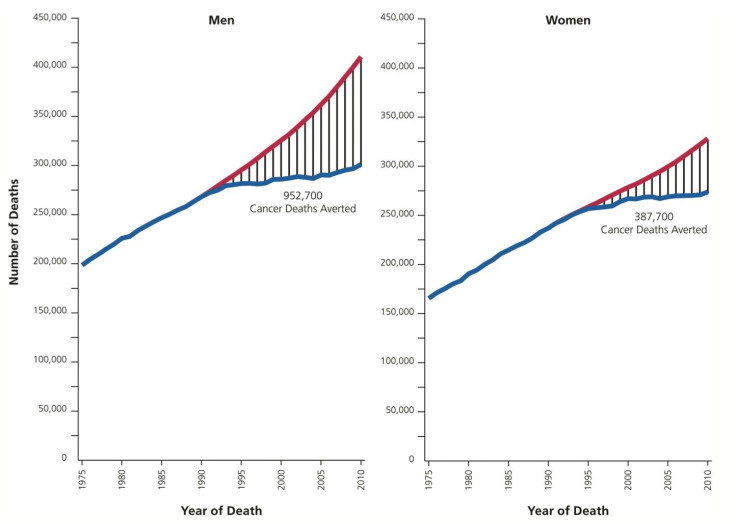Cancer Is Losing: Health Care Advances, Early Diagnosis Lead To Drop In Disease Rates

We may be eating ourselves to death and losing our memories, but at least our expiration dates aren’t determined as much by cancer anymore. At least, those are the findings of a recent study from researchers at the American Cancer Society.
The war against cancer has been littered with casualties since the group of diseases began to take hold during the 20th century. Americans started living longer and cleaning up their hospitals, adding years to the average person’s life span. While this may seem like a positive, the newfound vitality put aging bodies at risk for neurological disorders and immune-related illness, most notably cancer.
In other words, in preventing infectious diseases, our longevity exposed us to another cause of death. But fortunately for medical science, finding treatments for cancer is a far less complex process than protecting against entire swarms of bacteria and viruses, which don’t always attack in similar numbers or through similar modes of transmission. Cancer cells can be seen and targeted.
According to the new ACS data, cancer rates have been declining steadily for the last two decades, with the risk of death from cancer dropping 20 percent between 1991 and 2010. Where death rates peaked in 1991 at 215 deaths per 100,000 people, in 2010 the rate had fallen to 172 deaths per 100,000.
“Further progress can be accelerated by applying existing cancer control knowledge across all segments of the population,” the team wrote in its report, “with an emphasis on those groups in the lowest socioeconomic bracket and other disadvantaged populations.” Although black men saw the greatest decline in cancer death rates — as much as 50 percent — black populations still lagged behind whites for several types of cancer.

Measuring progress in the fight against cancer is difficult for a couple reasons. Researchers may be able to look at five-year survival rates and say cancer is becoming less of a concern, but there are also more cases being diagnosed overall — a result of both the added longevity and our improving ability to recognize cancer. The effect plays out in neurological disorders, too. Autism and ADHD, while recognized as dysfunctions of the brain, may be diagnosed prematurely, which cheapens the progress science is doing to move forward.
Behavioral factors may enter the equation, too. Cigarette smoking, for instance, was at an all-time high in the 1960s, when roughly 40 percent of the U.S. population smoked. Today, just over 18 percent of the country smokes. And by 2020, the Centers for Disease Control and Prevention hope to cut that rate to 12 percent.
The upshot to this decline involves more than just the habit of smoking; it means a lower rate of lung cancer. Smoking is the leading cause of death in the U.S., and more people die of lung cancer than any other type of cancer. If fewer people smoke, fewer people will get cancer. Suddenly, the fight against cancer moves in the right direction without any major pharmacological or surgical-based treatments necessary. All that changes is attitude.
So while the battle against cancer is still far from over — cancer ranks as the No. 2 killer, right behind heart disease — the trajectory of that fight, the momentum, is what really counts. Science cares about moving in the right direction, because that means incremental progress can eventually, and hopefully, tip toward the illustrious and coveted goal of a cure.
Source: Siegel R, Ma J, Zou Z, Jemal A. Cancer statistics, 2014. CA: A Cancer Journal for Clinicians. 2014.



























